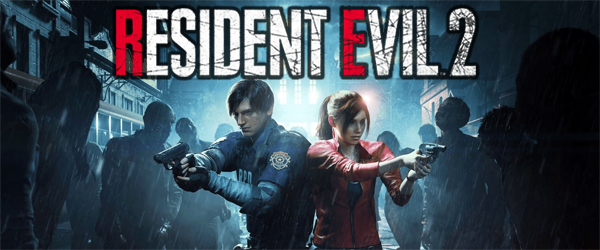
Getting started with this game was rough. First of all, streaming the game initially seemed to be blocked by Capcom, which sent me down an internet rabbit hole of trying to find a work-around. If I couldn't stream or capture gameplay, then it would be awfully hard for me to get decent screenshots -- let alone any video for possible YouTube content. I even Tweeted @AskPlaystation whether I could get a refund, so that I could instead purchase the game on Steam (where I knew I'd be able to record footage). @AskPlaystation never responded.
It was moot anyway, since the next day, I found that the problem was only associated with having High Dynamic Range (HDR) enabled in the PS4's settings. After disabling HDR, I was able to stream the game and capture video footage as normal. Of course, the game's colors didn't look so good -- but whatever, I could live with it. I guess this is a glitch. Maybe Capcom will fix the HDR streaming issue at some point in the future? I can't imagine that they deliberately disabled streaming with HDR, but left it enabled when HDR isn't being used.
You'll need to disable High Dynamic Range (HDR) on the PS4 if you want to stream REmake 2.
But even when I got the streaming and capture functionality working, I lost another night having to troubleshoot my PS4's network connectivity. I kept getting a DNS error. My PS4 has had internet connectivity issues off and on for years, so it might just have a bad network card. Or maybe my ISP is throttling it? It's hard to tell. The console regularly connects to the router and obtains an IP, but then fails to connect to the internet. Or it can connect to the internet, but fails to connect to PSN.
After several hours of troubleshooting, I had to manually enter the DNS addresses of my router's second and third DNS as the PS4's primary and secondary DNS, then sign out of the PSN, then boot up the PS4 in safe mode, then run a database rebuild (which took a few minutes), then reconnect to the PSN. That seems to have worked ... for now. We'll see how long the fix lasts...
In any case, these streaming and network issues cost me the first full weekend with the game. I'd have to play it on weeknights after work instead. Hopefully the game's quality would make up for these early frustrations...
I have adapted much of this review into a video critique on YouTube, if you'd prefer to watch a video.
The failure of REmake2's "hardcore" save system
Years ago, in the early years of this blog, I wrote an opinion piece called "The Genius of Resident Evil's classic save system". In that blog post, I wrote about how the way in which classic survival horror games (and Resident Evil in particular) limited the player's ability to save actually helped to amplify the horror atmosphere, while simultaneously facilitating open-ended exploration and creating the genre's trademark resource-management gameplay. I love the old Ink Ribbon method of saving, and I was thrilled that the brilliant REmake maintained these old systems to excellent effect. Other games like RE7 and Alien: Isolation also brought back more traditional survival horror save systems, but without the added complexity tying it to a consumable item (at least not by default).
Unfortunately, REmake 2's save system doesn't fare so well. By default, the game apparently uses autosaves and checkpoints, and you can manually save at typewriters without an Ink Ribbon. It all works similar to RE7. However, you can play on "hardcore" mode (which is available by default) to get an experience more similar to the original save system. Except, it doesn't work as well. In fact, it seems to be fundamentally broken.
It would be nice if the game would use Ink Ribbons from the item box,
rather than having to put it in your inventory, then put it back in the item box after you save.
Part of the reason for this is that the "hardcore" mode also doubles as the game's "hard" difficulty. On the "hardcore" mode, there are no autosaves or checkpoints, and you must consume an Ink Ribbon to save at the typewriters (just as in the original release). However, enemies also have more health and deal more damage, and resources are more scarce (Ink Ribbons apparently replace ammo pickups in certain places). This screws with the balance of the game such that the manual save system becomes less viable for a first-time playthrough.
... [More]
b46ccf26-8b91-4d4c-8bea-6508764790d3|9|2.6
Tags:PC, Leon Kennedy, Resident Evil, Resident Evil 2, Claire Redfield, zombie, remake, fallacy of sunk cost, Resident Evil 4, autosave, Capcom, Sony, save system, PlayStation 4, ink ribbon, Steam, typewriter, PC, Mr. X, Leon Kennedy, Tyrant, Claire Redfield, YouTube, zombie, fallacy of sunk cost, autosave, save system, ink ribbon, typewriter, Mr. X, Tyrant, YouTube
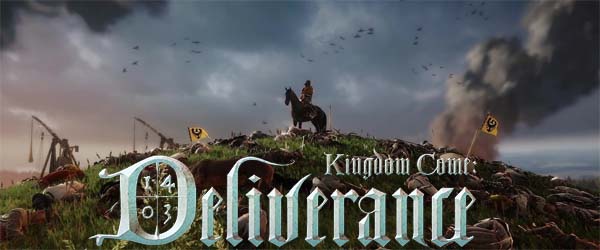
I tried. I really did. I wanted to give Kingdom Come: Deliverance a chance. I wanted to give it the benefit of the doubt.
I had been passively watching this game for a while, and was looking forward to its release. I didn't realize that it was a Kickstarter project. I thought it was just an independent developer self-publishing a game, like Hellblade: Senua's Sacrifice, which was friggin' awesome! So I didn't contribute towards the Kickstarter. But I did pay $60 for PS4 digital download of the game, and I deeply regret the decision.
If you're gonna charge the same retail price as a polished, publisher-backed game, then I expect the game to show something approaching that level of polish. Kingdom Come is just too wonky and unstable right now. Maybe in six or twelve months I might be able to pick it back up and enjoy it. As of now, however, I consider the game borderline unplayable.
Kingdom Come has ambitions to be Skyrim or The Witcher III, but it lacks the polish.
Scummy saves
The nail in the coffin is the game's restrictive and punitive save system. I'm a fan of diagetic save systems, and this particular save system could probably work really well if the game were just in a more stable and robust condition. I want to emphasize that this worked brilliantly in Resident Evil (and in survival horror in general) because the challenge and difficulty of survival horror came from having to manage a slowly dwindling supply of resources and health. Very few (if any) encounters outside of boss fights were even capable of bringing you from full health to dead, and even the boss fights were clearly telegraphed so that you had plenty of warning to go back, restock your supplies, and save. When to save (and whether or not to overwrite your previous save) became a part of strategy, especially in the case of Resident Evil with its limited,
inventory-space-consuming Ink Ribbons.
Reloading from savior schnapps makes you drunk.
Basically, Kingdom Come only auto-saves at the start of a major new quest. You can trigger a manual save by sleeping or by drinking a special type of rare and expensive alcoholic consumable. If you re-load after using the savior schnapps, the character is also inebriated. This seems, to me, to be an attempt to punish players for save-scumming. It also means that if you get tired or have to step away for whatever reason, and you didn't just complete a quest and are not in a convenient position to save (either lacking access to a bed, unable to risk being drunk when you reload, or simply don't have savior schapps), then you are just screwed.
Until this game gets to a more playable state, this save system needs to be relaxed immensely, or relegated to a "hard core" or "ironman" mode. Because the game is so bad at tutorializing mechanics and at presenting information to the player or warning you that what you're about to try to do won't work, save-scumming is almost necessary just to figure out how basic mechanics work in the limited opportunities that the game gives you to practice them. Tutorials drop walls of text on you without actually giving you an opportunity to practice the thing being tutorialized, so that you aren't given a chance to reinforce the concepts in your mind before the game moves on to something else. [More]
f6ada1a2-c15a-4d71-8aad-bdd16199aefc|1|5.0
Tags:Kingdome Come: Deliverance, Warhorse Studios, Deep Silver, RPG, medieval, Holy Roman Empire, Bovaria, save system, survival, sword, horse, open world
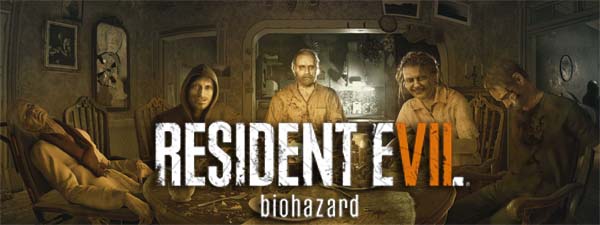
It's been a long time since I've given a crap about Resident Evil. I loved the classic Resident Evil games. The Play Station original is a foundational game for me, and jump-started my interest in horror and the macabre. I felt like the series jumped the shark with Resident Evil 4, however, and my interest in the series tanked with its abandonment of horror in favor of schlockey action-shooter gameplay. I played through Resident Evil 5's co-op with a friend, but didn't really enjoy myself, and after playing the abysmal demo for RE6, I skipped that one entirely.
So I was genuinely excited by Resident Evil VII: Biohazard. The popularity of first-person horror games, and the phenomenon that was P.T. / Silent Hills (not to mention the success of Resident Evil REmastered on Steam) obviously seems to have kicked Capcom in the butt and reminded them that there is still an audience for genuine horror games - an audience that mainstream gaming has neglected for most of the last decade. I'm not sure if development of REVII started as a response to P.T., or if it was already in the works following the success of games like Amnesia, Outlast, and Alien: Isolation. Either way, it's good to see major publishers embracing the genre again.
The family's new - but familiar - mansion
This new Resident Evil really does go back to the franchise's roots. The early hours of the game actually feel a lot like a combination of the original Resident Evil and Resident Evil 3: Nemesis, but updated with a first-person camera and a lot of modern horror contrivances. Long-time fans of the series will recognize the safe rooms and item-boxes. The classic health status indicator is now part of a watch on the character's wrist that you can see whenever you pull up your inventory. There's a foyer with a balcony. Doors are locked by silly, esoteric puzzle mechanisms that require themed keys, crests or various other stand-ins for keys. There's even a booby-trapped shotgun to tease you at the start of the game. Some of these elements of design feel appropriate, while other ham-fisted call-backs admittedly feel like the developers were trying too hard.
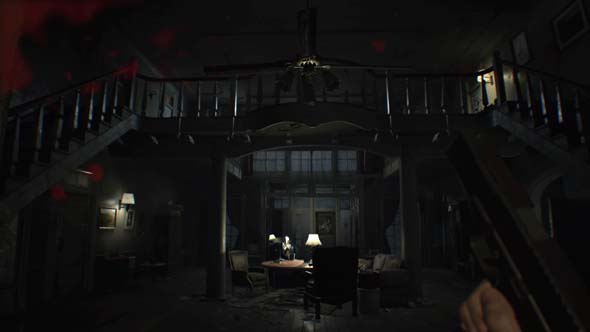
The mansion is new, but has many call-backs to the first game.
The map is well-designed, with its claustrophobic hallways, shortcuts, and lots of visual detail. Lighting is excellent, though the game is a bit too dark at the recommended brightness level (at least without a flashlight), and it becomes washed-out at higher brightness settings. Sound design is also quite exceptional, with the game giving great audio feedback (especially for the pursing stalkers). I also like a lot of the little details, particularly how using a key to unlock a door takes a small amount of time, during which you are vulnerable.
The family also makes for some excellent antagonists, especially compared to the likes of stupid, campy villains like Albert Wesker and Salazar. These villains have a lot of character, and there's enough detail in the mansion to give a sense of who these people might have been before they went off the deep end: the collectible football bobbleheads, for example. And on top of that, they are genuinely disturbing and threatening, and the whole game would probably be scary enough if you just spent the whole time avoiding them and trying to escape their murder house.
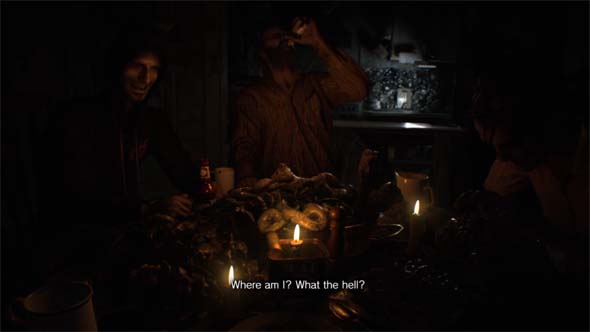
The family makes for genuinely disturbing villains that put RE's earlier villains to shame.
The save system is kind of an odd hybrid of the classic save system and more modern checkpoint systems. The logistics of the classic system have been scaled back, as you no longer require a consumable item (ink ribbon) to manually save (at least not on the default difficulty). But the game will also checkpoint you at certain points, and it maintains a single autosave slot with your checkpointed progress. So if you die to one of the obnoxiously-hard bosses, you don't have to go back a whole hour to your last manual save; instead, you get to restart at the most recent checkpoint.
However, the manual saves still have value, because Biohazard is structurally very similar to the original Resident Evil - both superficially and in terms of gameplay... [More]
a4e07563-fcc1-4e63-88fa-f5d8f517792b|1|5.0
Tags:Resident Evil, Biohazard, Resident Evil 7: Biohazard, Capcom, horror, survival horror, shooter, first person, inventory, resource management, mansion, autosave, save system, puzzle, logistics
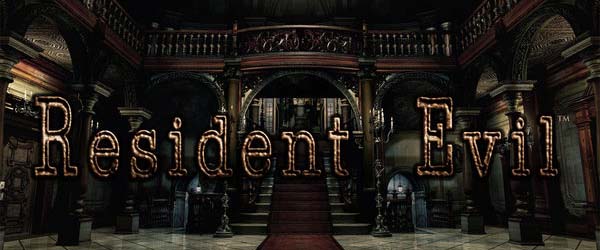
Not having a GameCube meant that I unfortunately missed out on some pretty high-quality games. Probably the most notable ones were Eternal Darkness and the remake of Resident Evil, neither of which, by itself, was enough to sell me on a console. I've since been able to play through a friend's copy of Eternal Darkness, and I had started on Resident Evil, but never got around to finishing it. When the HD remaster showed up on PSN, I was hesitant to buy it, since I knew that I could just play it on my friend's GameCube eventually.
Best of both worlds at the tip of your thumb
However, something in the previews really intrigued me. And that was the compromise that Capcom found for the never-ending conflict between the tank-style controls of the original PSX game and the analog control of newer games. Since I grew up with Resident Evil, Silent Hill, and other survival horror and similar adventure games, I've never had a problem with tank controls. They tend to be the lesser evil when dealing with static camera angles that change unpredictably (as in Resident Evil), and they are perfectly serviceable for behind-the-back or overhead cameras (as in the outdoor areas of Silent Hill). This ensures that the controls remain consistent during camera angle changes, since they are always relevant to the character rather than the camera.
But apparently, some people hate that control paradigm. They criticize it for making the characters feel too slow and lumbering, and that it lacks precision. The controls have oft been cited as one of the reasons for Resident Evil's declining popularity after Resident Evil 2, and supposedly ditching them was a major factor in the "renaissance" that was [supposedly] Resident Evil 4. But let me remind you that Resident Evil 4 had the exact same controls, and the character was just as slow and lumbering (if not moreso). The only difference was that the camera was moved to behind-the-back, and the gameplay switched to an action shooter rather than a more adventure-puzzle kind of game. So really, your problem was never with the controls...
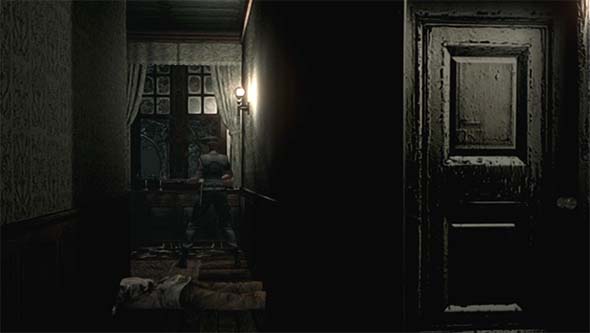
The original Resident Evil was criticized for how its controls and camera lead to frequent blind corners,
wasted ammunition, and cheap kills. The critics were right, but it wasn't game-breaking...
Regardless, analog control has its own baggage train of problems. Pressing the stick in one direction can cause the character to make sudden changes of direction if the camera suddenly changes. This can be mostly avoided by locking the character's movement as long as the player doesn't release or rotate the stick - and the HD Remaster does implement this. But this still leads to sudden turn-arounds when the player needs to move the character around a corner, since you sometimes have to move the stick to the exact opposite direction that you were pressing. And in cases in which the camera angle changes at the point where a change of direction is required to go around a corner or navigate an obstacle (which happens often), then the character can easily get lost in a cycle of spinning around between the two camera zones.
So there is no perfect solution to the problem of static cameras, but I tend to prefer the tank method due to its guarantee of consistency - even at the cost of some slow turning speeds. In any case, advocates of either paradigm should find exactly what they want in this remaster, since both configurations are implemented in the remastered game's default control scheme! Capcom's clever (and elegant) solution was to simply map the tank controls to the directional pad, while leaving the free analog movement on the analog stick. Players are, thus, free to alternate between whichever control they prefer without even having to go into a menu to change it. You can even alternate between them, on the fly, in the heat of the action if the situation warrants it, because I can definitely see how the analog movement could work well in some of the [rare] larger, open areas of the map (particularly for boss fights).
It's OK to hate these red-headed step-zombies
Most of the changes introduced in the GameCube remake serve to add further challenge. The most prominent display of this is the new "Crimson Head" zombie mechanic. If you kill a zombie and didn't manage to get lucky enough to blow its head off, you must burn its body in order to prevent it from resurrecting later in the game as a more dangerous "Crimson Head". These red-headed zombies are faster and more damaging than their precursor form. They can rapidly run across a room and grab you before you even realize they are there. They are also very well-tutorialized, since most players will probably encounter their first Crimson Head while attempting to retrieve the Armor Key from the hallway trapped with suits of armor on rails. The previous hallway includes a dead body that (if you didn't go out of your way to burn previously) will resurrect at this time. This hall has a system of mirrors in place that allow a tremendous degree of visibility from virtually every camera angle, meaning that whichever door you enter from, you'll have an opportunity to see the Crimson Head coming after you. It's a frantic and frightening moment!
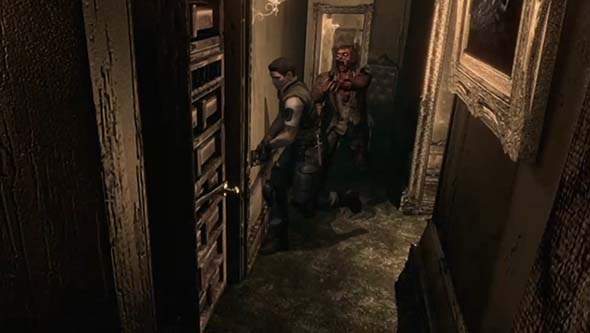
Bodies that you don't burn will resurrect as faster, more deadly "Crimson Heads"
that are difficult to avoid and require a second investment in resources to defeat.
Almost any zombie in the game can potentially turn into this more dangerous form. Destroying their head with a lucky shot or burning their bodies are the only ways to permanently ensure that they can't attack you... [More]
bedbfed9-e92f-45b6-b083-1b57db8977fc|1|5.0
Tags:Resident Evil, HD, remaster, remake, port, Capcom, survival horror, Jill Valentine, Chris Redfield, Albert Wesker, mansion, zombie, save, save system, tank controls, checkpoint, typewriter, ink ribbon, resource management, puzzle, logistics, GameCube, b-movie, Shinji Mikami

I've heard that a lot of players are complaining about the save system of Capcom's new Resident Evil 6. I haven't played the game yet because RE5 sucked, and the demo for RE6 sucked, so I can't comment on that game. What I can do, though, is take a moment to reflect on the genius of the classic Resident Evil save system.
Most of my readers know me as a Silent Hill fan [boy], so it's uncommon for me to heap praise upon Resident Evil. But I actually am a big fan of the original game (it was one of my favorite PlayStation games). Maybe some day, I'll get around to writing about how Resident Evil 4 killed my interest in the franchise...
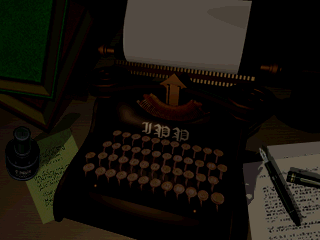
Would you like to save your progress?
[YES] NO
Resident Evil took a unique path in terms of it's save-game system. I'm not sure if it was the first to use this particular style of system, but it was definitely one of the best implementations that I played!
During the PSX era of the late 90's, game saves generally took one of 3 forms:
Resident Evil falls firmly in that last category, but with one significant (and game-changing) caveat: in addition to only being able to save at pre-defined locations, the ability to save was also tied to a consumable inventory item! [More]
11efae01-91a1-4c73-9ff1-8965e9a48534|9|4.2
Tags:Resident Evil, Resident Evil 5, Resident Evil 6, Shinji Mikami, save, save system, autosave, checkpoint, survival horror, resource management, typewriter, ink ribbon, Silent Hill, Amnesia: the Dark Descent
|

| 12 | | | | | | | 60 | | 11 | | | | | | | 55 | | 10 | | | | | | | 50 | | 09 | | | | | | | 45 | | 08 | | | | | | | 40 | | 07 | | | | | | | 35 | | 06 | | | | | | | 30 | | 05 | | | | | | | 25 | | 04 | | | | | | | 20 | | 03 | | | | | | | 15 | | 02 | | | | | | | 10 | | 01 | | | | | | | 05 |
|